Sewer backups often come at the most inopportune times and can lead to serious health issues due to unsanitary conditions. Fortunately, there are many steps you and your family can take to effectively fix sewer backups before major problems arise.
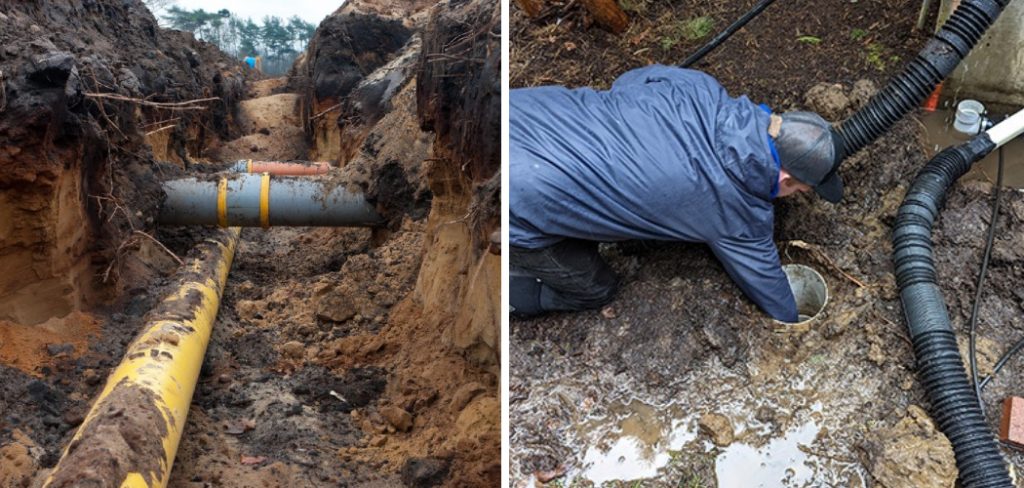
In this blog post we’ll discuss preventative measures, proper maintenance techniques, as well as treatments for other specific causes that may lead to frequent blockages or backups. Keep reading and learn how to fix sewer backup!
If you’ve ever experienced sewer backup, you know that the resulting mess can be anything but pleasant. Not only is it unsanitary and worrisome, but it can even lead to further damage in your home if not addressed right away.
Fortunately, there are steps you can take to both avoid this problem from happening again as well as care for any existing backups so that your home regains its cleanliness. In this blog post, we’ll explore the causes of sewer backups and provide solutions on how to fix them quickly and safely.
Why is It Important to Fix Sewer Backup?
1 . To Avoid Unpleasant Smells and Clogs
Sewer backup can lead to unpleasant odors in your home or business. It can also create clogs, which can cause other plumbing problems as well as slow the flow of water from drains throughout your property. By addressing a sewer backup issue promptly, you can avoid these issues and keep your property smelling fresh and functioning properly.
2 . To Prevent Damage to Your Property
In addition to creating unpleasant odors, a sewer backup can cause serious damage to your property. Since the sewage contains bacteria and other contaminants, it can cause extensive damage if it is left untreated. By addressing the issue promptly, you can stop further damage and protect your property from major issues in the future.
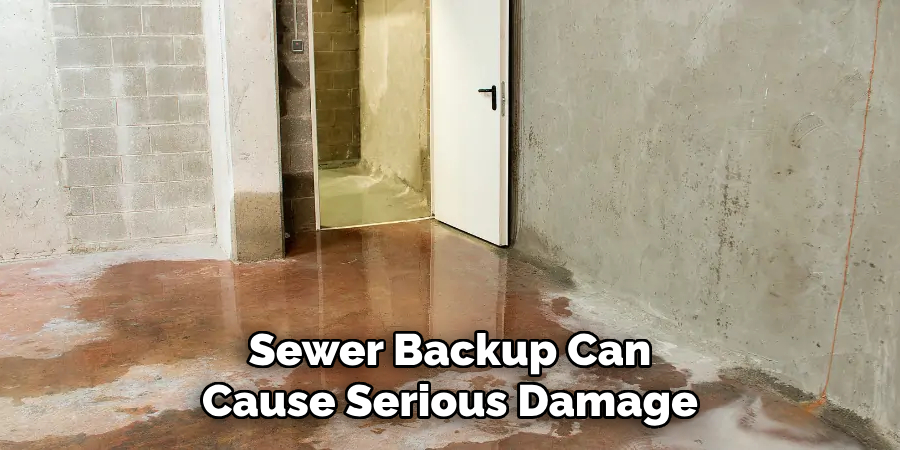
3 . To Save Money
When left untreated, a sewer backup can become worse over time. This means that the cost of repairs or replacement could be significantly higher than it would have been if the issue had been addressed earlier. Taking the time to address a sewer backup now can save you money in the long run by preventing more costly repairs later on.
4 . To Improve Home and Business Safety
In addition to causing damage to your property, a sewer backup can also be hazardous for those on the premises. Sewage contains bacteria that can cause a number of illnesses when it comes into contact with humans or pets. By addressing the issue quickly, you can ensure that everyone in your home or business remains safe and healthy.
By understanding the importance of addressing a sewer backup quickly, you can take steps to ensure your home or business remains in optimal condition for years to come. By taking the time to address any issue with your plumbing, you can benefit from improved sanitation, safety, and cost savings in the long run.
10 Tips on How to Fix Sewer Backup
1 . Use a Plunger
The simplest and most cost-effective way to fix a sewer backup is by using a plunger. This tool can help to dislodge any clogs that may be causing the backup. Before using a plunger, make sure you apply petroleum jelly on the edges so that it creates an airtight seal when placed over the drain opening.
It is best to plunge a few times and then take a break for about 5 minutes. This helps create more pressure, which can help dislodge any clogs.
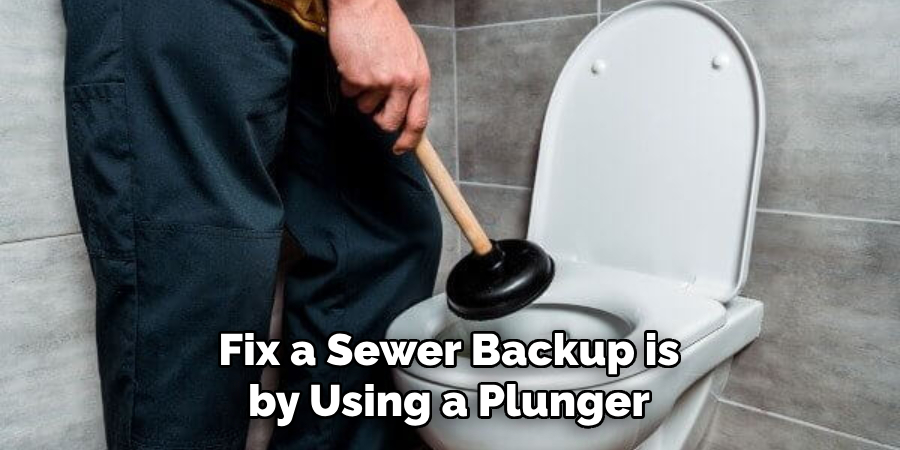
2. Use Baking Soda and Vinegar
For tougher clogs, you can try using baking soda and vinegar. First, pour one cup of baking soda down the drain, followed by one cup of vinegar. Then, cover the drain with a stopper and let it sit for about 30 minutes. After that, pour hot boiling water down the drain to help flush out any debris and clogs.
3. Try Using a Drain Snake
If baking soda and vinegar don’t work, you may need to use a drain snake. This tool is very useful in clearing out tough clogs and blockages from within the drainpipe. Make sure to insert the snake all the way into the drainpipe and try to remove as much debris as possible.
4. Use a Hydro jetting Machine
If you don’t have access to a plumbing snake or plunger, you can always try using a hydrojetting machine. Hydrojetting machines use high-pressure water to clear out any debris or clogs from the drainpipe and restore it back to its original condition.
5. Use Manual Cleaning
In some cases, manual cleaning may be necessary to remove stubborn clogs from your pipes. This can involve using rods and brushes to remove any debris from the pipes physically. It is best to hire a professional plumbing service for this job as they have the right tools and equipment to do it safely and effectively.
6. Re-Pipe Your Drain System
If all else fails, you may need to re-pipe your drain system in order to fix the sewer backup issue. This involves replacing the old pipes with new ones and can be quite costly. It is best to hire a professional plumber for this job as they have the experience and tools to do it correctly.
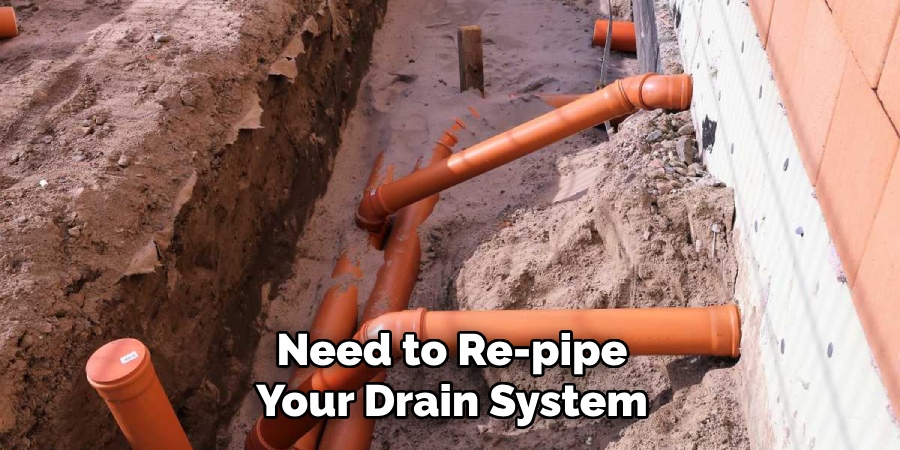
7. Monitor Your Pipes Regularly
To prevent future sewer backups, it is important to monitor your pipes regularly. This means checking them for any signs of wear and tear or blockages. If you notice any issues, it is best to contact a professional plumbing service right away so they can take care of the problem before it becomes worse.
8. Replace Old Pipes
If your pipes are old and worn out, then replacing them is the best option. This not only prevents future sewer backup problems but also helps improve your plumbing system’s overall efficiency.
9. Use a Grease Trap
Grease traps are an effective way to prevent grease from getting into the sewer and causing backups. Make sure to clean and maintain your trap regularly in order to ensure it is working properly.
10. Contact a Professional Plumber
If you are unable to fix the sewer backup yourself, it is always best to call a professional plumber. They can help diagnose the issue and provide you with the best solution for getting your plumbing system back in working order.
These are some of the most effective ways how to fix sewer backup problems. However, if these methods do not work, it is always best to call a professional plumber for advice and assistance.
Remember, prevention is the key to avoiding future backups. So make sure to monitor your pipes regularly and replace them when necessary. This will help ensure that your plumbing system works properly and without any issues in the future.
Frequently Asked Questions
What Precautions Should I Take While Fixing a Sewer Backup?
When dealing with sewer backups, it is important to take the proper precautions. It’s best to wear long-sleeved shirts, pants, gloves, and safety glasses as well as boots when wading into sewage water or dealing with piping. Additionally, make sure that any electrical outlets are turned off before beginning any work.
What is Involved in Fixing a Sewer Backup?
Fixing a sewer backup usually involves unclogging the pipe, cleaning the sewage, and replacing any damaged piping. Depending on the severity of the blockage, it may be necessary to use plumbing snakes or augers to clear out debris from pipes. Additionally, water pressure jetting may be used to clean the pipes.
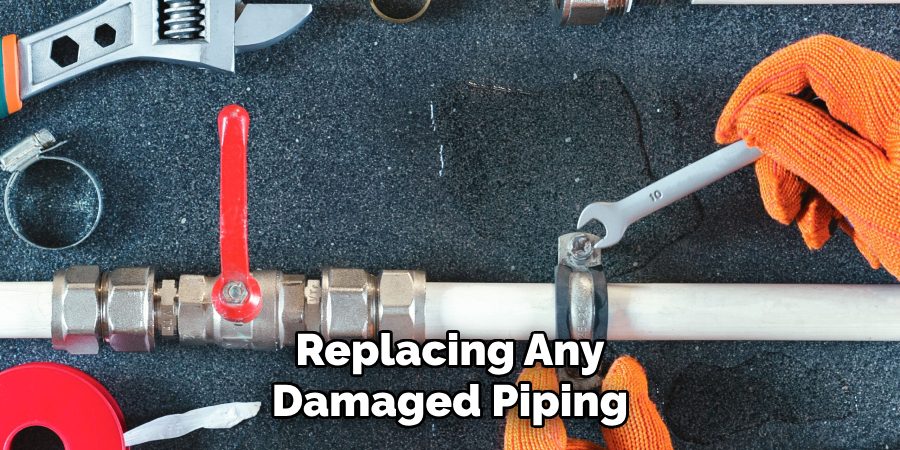
How Can I Prevent a Sewer Backup From Happening?
One of the best ways to prevent sewer backups is by being mindful when flushing materials down your drains. Prohibited materials include wet wipes, sanitary napkins, and other non-biodegradable items.
Additionally, it is important to watch for signs that may indicate there is a problem, such as slow-draining sinks or water backing up in toilets. Regular maintenance of your pipes can also help prevent backups from occurring.
What Should I Do if I Suspect I Have a Sewer Backup?
If you suspect that you have a sewer backup, the best course of action is to contact a professional plumber. They have the skills and knowledge necessary to assess and address the issue quickly and efficiently. A professional plumber can also provide advice on how to prevent future backups from occurring.
Conclusion
Ultimately, fixing a sewer backup can be a difficult and complex task. Even if you think you have done everything correctly by following the steps above, it may not always work.
It is important not to take on too much when trying to repair your sewer line. While DIY solutions can often fix smaller issues, such as regularly cleaning out your pipes and checking for clogs, more serious issues may require professional help from an experienced plumber.
Knowing how to fix sewer backup is an essential skill for any homeowner, so learn these tactics today and save yourself time and money in the future. With some careful effort and know-how along with the right tools for the job, you are sure to find an effective solution in no time.

